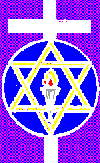|
The |
|

Someone wrote into Daniel Emmanuel's website asking, "Did Paul Solomon ever explain the symbolism of the last supper where you are to partake of bread and wine in remembrance of Christ's body?" “The Origins and Purposes of the Holy Sacraments” . . . Jesus gave many instructions to his little school of disciples during the three years he spent with them. He instructed them in many acts that were private, personal exercises. None of these were sacraments. They involved a personal relationship between man and God, and included forming a personal relationship with the Christ spirit. These practices included prayer, meditation, private forms of worship, but they did not fit the definition of a sacrament. What makes a sacrament a sacrament? Sacraments are community based. They require community in order to accomplish them. Sacraments involve coming together as a group to confirm a family relationship with God, which is different from a personal relationship with God. Sacraments cannot be performed privately. They require more than one person. They involve community. There is one more thing that makes a sacrament a sacrament. When coming together and assembling for the purpose of worship, Jesus instructed the people to invoke his presence. He said, “Do this in remembrance of me.” (Luke 22:19) Jesus gave this instruction at the initiation of every sacrament. He said, “Do this because I have commanded you to do it. Do it to remember this commandment. Do it to remember our relationship.” Essentially, he was saying, “When you do this, you invoke me. It is the most effective, positive form of invocation of my presence. It is a very clear communication. Because you do this, I will be there.” You can certainly invoke Christ through prayer, which builds a personal relationship between you and the Christ spirit. But Jesus specified the worship of more than one. “For where two or three are gathered together in my name, there am I in the midst of them.” (Matthew 18:20) . . . . . . . Some call the sacrament of taking bread and wine the Lord’s Last Supper. Some call it the Holy Eucharist. Others call it Holy Communion. If we look at the origins and evolution of this ritual, we find that it did not originate with Jesus, nor in Judaism. It was practiced in ancient Egypt and probably in other ancient cultures. The practice was a recognition of energy meeting matter. In these
ancient ceremonies, matter was reduced to its simplest form, which was ground grain
combined with water. Leavening was not added, nothing to make it more palatable. There was
just the dry wafer of earth. As they introduced water to the dry grain, they wanted to
invoke a greater There was one more piece to the ritual. That pivotal piece says
that “Whatever I am thinking when I bring these elements together dictates the nature
of the power that is released when they meet each other within me. So, I take the bread
and the wine, knowing that I am introducing within myself the four elements
simultaneously—earth, air, fire and water—knowing that they will meet together
in an explosion of energy.” The objective of the ceremony was to commit that energy
to a specific purpose. The moment On at least two recorded occasions when this ritual was practiced,
the teacher, the one introducing the practice, said, “When you do this, you can
literally transform yourself to work miracles.” Melchizedek said it to Abraham,
claiming him to be “possessor of heaven and earth.” (Genesis 14:18-19)
Jesus told his disciples when he served the sacramental meal, “He that believeth on
me, the works that I do shall he do also; and greater works than these shall he do.”
(John 14:12) He said that “You are capable In today’s churches, we have a ritual celebration occurring, which Jesus did not institute or practice, generally called communion. Communion is the taking of bread and wine within a community for the purpose of cementing a congregation as a church. It is not a sacrament. The sacrament is the sacred meal that is taken as a communion with God, involving the holy marriage of the elements for the purpose of transformation. Why did Jesus say, “My flesh is meat and my blood is
drink.” What did he mean? His message was not esoteric. It was made crystal clear in
the fourteenth chapter of John. Jesus said that “The things that you have seen me do
that you consider miracles really did happen. They are miracles in that they are
expressions of laws that you do not understand. They did happen. I really did do them. The
reason that I can do these miracles is not because of myself as this body or this flesh.
The reason I can do them Jesus said that “The source of myself is in me, the source of life itself is in me. And that source of life gives life, heals life, creates laws, transcends laws, creates miracles, because it is in me. Because I am not in competition with it, I can produce these miracles. When you look at me, because I am not in competition with my source, you can see my source when you see me. My source and I are one. You have come to know me. If you have come to know me, you have come to know my source, because my source and I are one. If through knowing what I am, at harmony with my source, if you have that same thing inside you, if you have me in you as I have God in me, then everything that I do you can do and greater things than these.” The next step was for Jesus to say, “Let’s just illustrate this. Let’s say this piece of bread is my body. Take it into your body. Now, you have got me inside you. Because you have got me inside you, you can do what I have done. This wine is my blood. Drink it. My source that is in me is now in you, and you can do whatever I have done and more.” Then Jesus said, “Now, take it one step further. Every time that you drink or eat anything, from now on, for the rest of your life, make it a holy experience. Take me into you and release within yourself all the power that I have had.” That was the original intent and purpose of this holy sacrament—nothing short of personal transformation. © Paul Solomon Foundation 1994 “The Wisdom of Solomon” is a book being edited and organized by Grace de Rond. |


 Webmaster:
Daniel Emmanuel
Webmaster:
Daniel Emmanuel